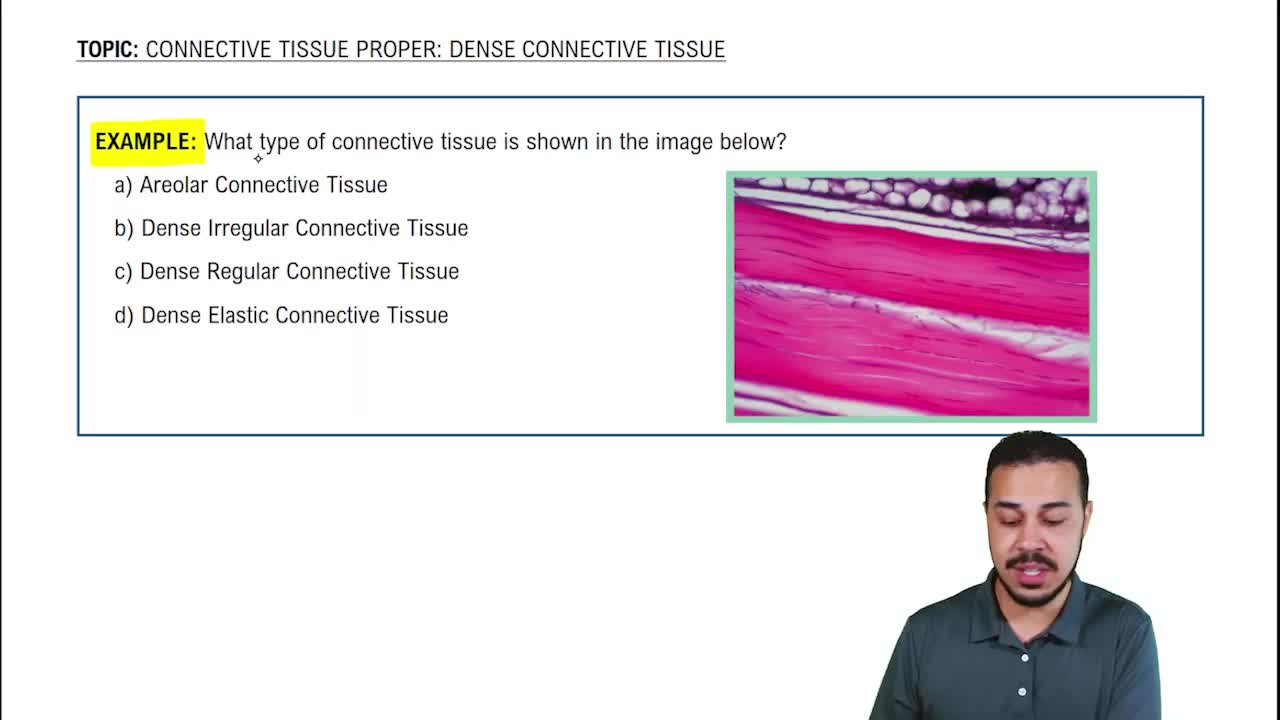Textbook Question
Use the key to classify each of the following described tissue types into one of the four major tissue categories.
Key:
connective tissue
epithelium
muscle
nervous tissue
_________ (1) Tissue type composed largely of nonliving extracellular matrix; important in protection and support
_________ (2) The tissue immediately responsible for body movement
_________ (3) The tissue that enables us to be aware of the external environment and to react to it
_________ (4) The tissue that lines body cavities and covers surfaces
609
views




